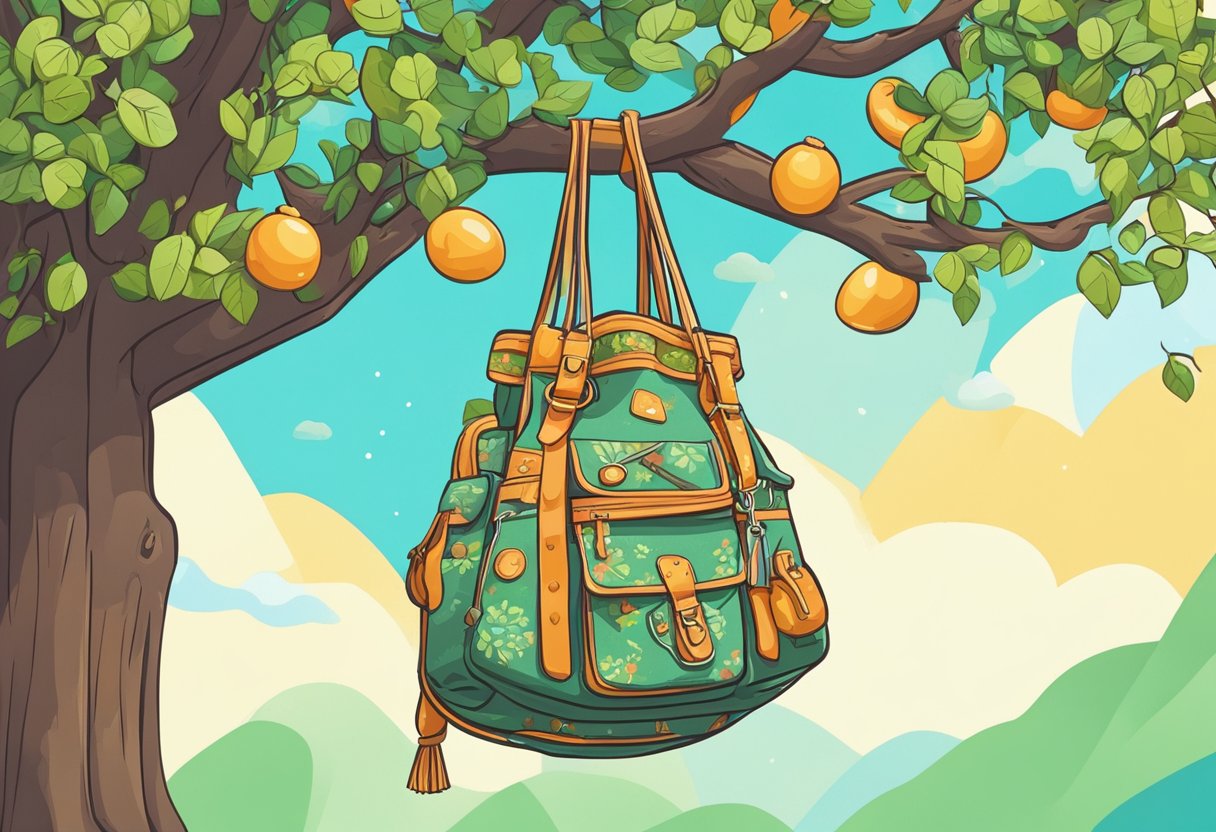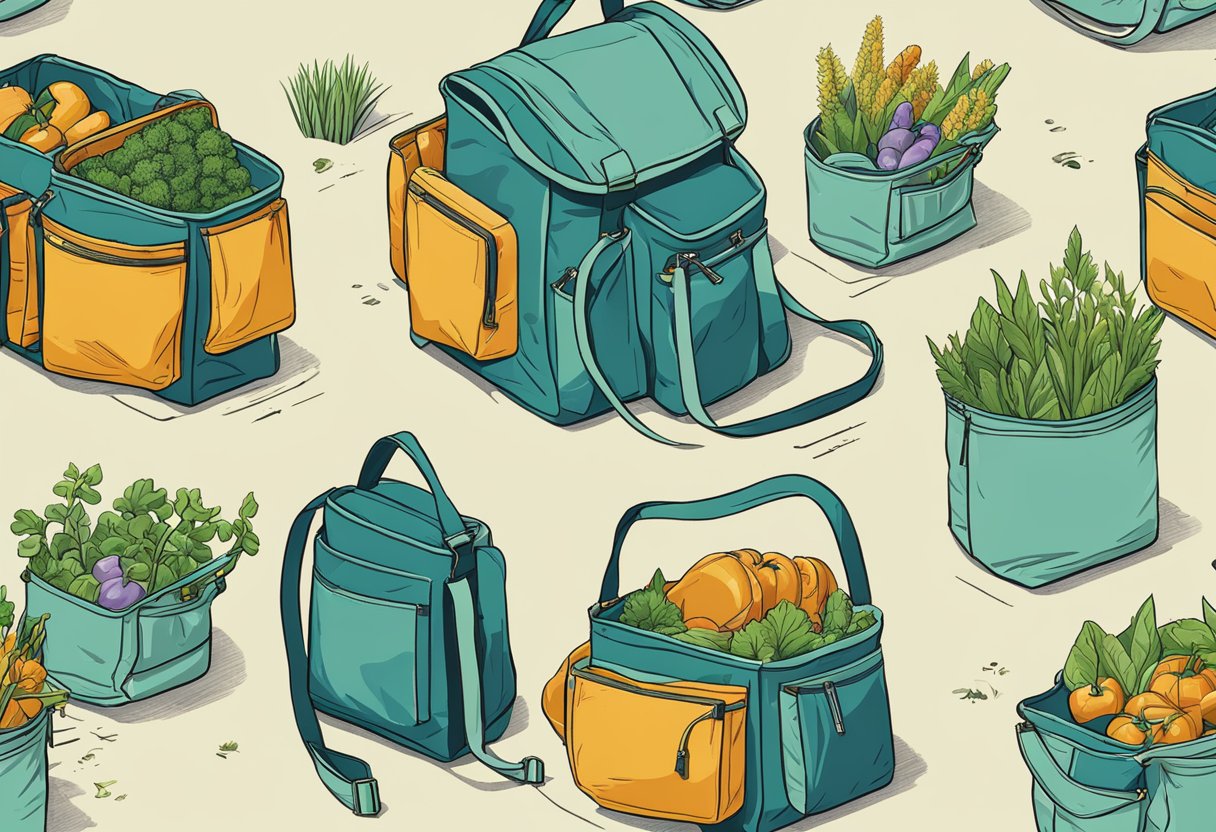Foraging bags are an essential tool for anyone interested in exploring the outdoors and gathering edible, medicinal, or simply fascinating plants and fungi. These specially designed bags provide a convenient way to carry and protect your finds while leaving your hands free to continue searching. With a variety of designs and features available, a good foraging bag can enhance your experience as you venture into the world of wild edibles and sustainable living.

When choosing a foraging bag, it’s important to consider the various factors such as its durability, versatility, and special features that cater to your specific needs. Some bags come with removable inserts for easy cleaning, while others have adjustable straps for comfort and convenience. The right foraging bag can make all the difference in your ability to explore nature’s bounty while ensuring the safety of both yourself and the environment.
Key Takeaways
- Foraging bags are essential for gathering wild edibles and medicinal plants conveniently and safely.
- Consider durability, versatility, and special features when choosing the perfect bag for your needs.
- The right bag can positively impact your foraging experience while protecting your finds and the environment.
Design and Manufacturing
Canvas and Durable Material
A foraging bag should be made of high-quality materials like canvas for durability and longevity. Using waxed canvas for a foraging bag not only adds water resistance but also gives it a vintage appearance. Foraging activities such as mushroom hunting require a sturdy bag that can withstand the elements and protect the collected items.
Handmade and Vintage-Inspired Design
Many foraging bags feature a handmade, vintage-inspired design, often found on platforms like Etsy. These bags showcase craftsmanship and attention to detail, offering a unique and functional accessory for both casual foragers and experienced gatherers participating in activities like mushroom hunting.
Multi-Way Straps and Ergonomic Comfort
Foraging bags should offer multi-way straps for versatile carrying options, accommodating different preferences and ensuring ergonomic comfort during long hours of exploration. A foraging kit may also include additional tools, such as knives or scissors, with a well-designed foraging bag providing ample storage space for these essential items. By combining style, durability, and functionality, a quality foraging bag enhances the overall experience for those engaging in the art of gathering nature’s bounty.
Use and Versatility
Foraging, Gathering, and Harvesting
In the world of foraging and wild harvesting, having the right bag is crucial for a successful and efficient experience. A foraging bag should be suitable for various activities, such as mushroom hunting and collecting herbs or fruits. As the name suggests, the primary purpose of a foraging bag is to hold and protect the harvested items while traversing through the terrain.
Lightweight and Compact for All Terrains
Another critical aspect of a foraging bag is its adaptability to different terrains. Foragers often need to move through forests, hills, and fields to find the best resources, and a lightweight, compact bag allows for easy mobility. A mushroom foraging backpack can be an excellent choice as it provides a hands-free alternative while carrying your finds, and helps you navigate through all terrains with ease.
Weather Resistance and Durability
Finally, a dependable foraging bag should be built to withstand various weather conditions and remain durable over time. A strong, weather-resistant material like waxed canvas or a water-resistant fabric will protect the contents of the bag while ensuring the bag itself stays in good shape. This is essential for foragers who may encounter rain, wind, or other unfavorable weather elements during their harvesting adventures. The right foraging bag will not only make foraging more enjoyable but also provide a reliable and efficient way to bring nature’s bounty home.
What to Forage

Foraging for Mushrooms and Shrooms
Foraging for wild mushrooms can be a rewarding and delicious experience. Ohio, for instance, is home to a wide variety of edible mushrooms. However, it’s important to be aware of the different mushroom seasons. A mushroom season chart can provide valuable information on the best times to find different types of mushrooms. If you’re inexperienced in mushroom foraging, it’s a good idea to take a mushroom foraging class to learn how to identify and harvest wild mushrooms safely.
Collection of Fruits and Berries
In addition to mushrooms, many foragers enjoy collecting wild fruits and berries. These natural treats can be found in various locations and ecosystems, such as forests, meadows, and even urban areas. Keep in mind that the availability of fruits and berries will depend on the season and region. It’s essential to learn about the specific types of fruits and berries native to the area where you plan to forage, as well as their optimal harvest times.
Gathering Flowers, Vegetables, and Roots
Foraging isn’t limited to mushrooms and fruits; wild flowers, vegetables, and roots can also be valuable resources for culinary enthusiasts. These edible plants can serve multiple purposes, ranging from adding flavor to dishes to providing vital nutrients. Foraging for flowers, vegetables, and roots requires knowledge of their habitats and harvesting seasons, similar to mushroom and fruit foraging.
When foraging for wild plants, it’s important to distinguish between edible and toxic species. If you’re uncertain about a specific plant, it’s best to err on the side of caution and avoid it. Remember, foraging responsibly is key to preserving the environment and enjoying the experience safely.
Maintenance and Care

Cleanliness and Wash
To maintain the freshness and quality of your foraged items, it is essential to keep your foraging bag clean. Washing the bag regularly will prevent the buildup of dirt and fungi, ensuring a safe storage environment for your finds. For delicate items like morel mushrooms, proper storage techniques are vital to preserving their flavor and texture. Follow these tips to store morels correctly.
Resistance to Wear and Tear
A quality foraging bag should be able to withstand rugged wear and tear from outdoor adventures. Look for bags made with durable materials, such as waxed canvas or heavy-duty nylon. Investing in a well-constructed bag ensures that it will hold up to frequent use and resist damage, allowing you to focus on the joy of foraging.
Water-Resistant and Breathable Features
Another key aspect of foraging bag maintenance is its water-resistant and breathable features. A good foraging bag should protect your finds from moisture while allowing air circulation to prevent condensation and rot. Some bags may have water-resistant coatings or specialized linings that can become less effective over time. Keep your bag in good condition by regularly checking and treating these features as needed.
Regular cleaning, investing in a durable bag, and paying attention to water-resistant and breathable features are essential steps in ensuring the longevity and effectiveness of your foraging bag. By maintaining your bag properly, you’ll be well-equipped to collect, store, and enjoy nature’s bountiful gifts.
Pricing and Purchase

Finding for the Right Price
Purchasing a foraging bag can vary in price depending on the material, size, and brand. Some affordable options might be repurposed plastic bags or handmade baskets, while more expensive options could include specialized foraging bags and leather pouches. It is essential to research and compare prices of different bags and baskets to determine which provides the best value for your needs. For example, if you’re fond of foraging for morels, consider investing in a durable and moisture-resistant bag to preserve their quality.
Making the Purchase and Delivery
When you have decided on the right foraging bag for your needs, ensure you have an account with the retailer if needed, and proceed with the purchasing process. Delivery options may vary depending on the seller and location, so it’s essential to review the delivery details before completing your purchase. Many online sellers like Amazon offer free delivery on certain items for a minimum spend or with a subscription service, for example. If you require a faster delivery, check out their expedited shipping options such as Express or Next Day, which may come at an extra cost.
Return Policy
It’s crucial to review the seller’s return policy before purchasing your foraging bag, as this can vary for different products and retailers. If the bag or basket does not meet your expectations or is damaged upon arrival, you’ll need to know how the return or exchange process works. Most retailers have a standard period within which the item can be returned, usually around 30 days. Some sellers might have restrictions on returns, so always read the terms and conditions before buying. If you are unsure about how the return policy applies to the specific bag you are interested in, it is advisable to reach out to the seller or retailer for clarification. This would ensure a hassle-free return or exchange of your foraging bag if it doesn’t live up to your expectations.
Special Features

Convenient and Hands-Free Comfort
Foraging bags are designed to be comfortable and convenient for users who spend long hours in the outdoors collecting various items. Most bags come equipped with hands-free features such as adjustable shoulder straps, waist belts, or carabiner clips that allow users to securely attach the bag to their body. This design ensures that the forager can move freely without the burden of carrying the bag in their hands, ultimately providing a convenient and hands-free experience.
Carrying Capacity for Heavy Collection
A crucial aspect of foraging bags is their ability to accommodate and support heavy collection. Many bags are crafted from heavy-duty materials like waxed canvas, durable nylon, or mesh to ensure they can withstand substantial weight. Additionally, these bags often come with separate compartments or swappable inserts that help organize and store various foraged finds. Some bags may also feature sturdy handles and reinforced stitching for extra support, enabling users to confidently carry large quantities of items without worrying about the bag giving way.
Adding Personalized Touches
For some foragers, a personalized touch can be essential. Many foraging bags offer options for customization and personalization, such as embroidery, monogramming, or customizable strap lengths. Additionally, some manufacturers may provide color choices or unique, eye-catching designs that allow users to choose a bag that reflects their personality or preferences. By offering these personalized touches, foraging bags become more enjoyable for users and can even enhance their confidence during outdoor excursions.
Frequently Asked Questions

What are the best materials for a foraging bag?
Durable and lightweight materials are ideal for a foraging bag. Waxed canvas is a popular choice due to its water resistance and durability. Other options include strong polyester or nylon fabric. Some foraging bags also have a mesh or breathable bottom panel to allow dirt and debris to fall through.
Can I use a foraging bag as a gathering bag?
Yes, foraging bags can double as gathering bags for various purposes, such as collecting fruits, vegetables, or other goods. The Barebones Foraging Bag, for example, comes with different liner inserts that make it versatile for carrying a variety of items.
How do I choose the right size for a foraging bag?
The right size for a foraging bag should be determined by your personal needs and preferences. Consider how much you intend to carry and the types of items you typically collect. Smaller bags may be suitable for leisurely walks, while larger bags may be necessary for extensive foraging trips. Multiple compartments and adjustable straps offer additional versatility and comfort.


